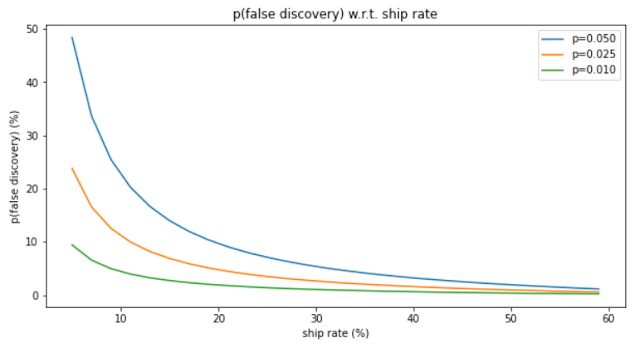Uplift vs. Response: The Targeting Dilemma
Targeting is always reinventing itself. Who should be targeted for ads display? What should be the target customers for a direct mailing campaign or an email blast? This has been quite puzzling to Marketers in recent years. Software providers and Marketing Agencies have been quick to seize this opportunity to offer a solution to it: Uplift Modeling. Let's deep dive into what this new realm exactly means.
1- What is Uplift:
Let's look at 2 groups of customers to get familiar with the concept.
A pure response model would dictate to target the segment with the highest Response Rate. Now, is it the right approach?
One may argue that maximum effectiveness, or Uplift, is a better criterion since 5-2 = 3 more customers would convert every 100 customers.
So, Uplift is really the art of maximum efficiency by subtracting out the "base response". A corollary to this is to take out customers that are inelastic, either they cannot be convinced to take the offer (the lost cause) OR they will shop anyway (the die hard).
2- What is required to model Uplift?
a. Raise Awareness:
The first requirement is to realize that Response is not a good KPI. In my experience, it is sometimes difficult to convince management that their Marketing Department has been using the wrong KPI for such a long time. Plus, switching from a measurable to a latent metric can be quite daunting! Can Uplift be measured anyway?
b. Be Proactive at measuring Uplift:
With management support, the team can move to start creating a performance report. What is the actual share of Demand of of total Response? This is the realm of A/B testing which is a quite well studied topic. A typical "Gotcha" is the size of the Control Group. Too small of a control group means that the measurement may be misleading due to uncertainty (see Interval of Confidence) so one should be generous with volume in the learning stage to ensure proper measurements. There are tools out there to calculate the right size.
c. Model Uplift:
Now the team has a good handle of the current performance of your selection process, it is now time to improve it using a modeling approach.
The model needs a data from a randomized experiment, that is sending a Marketing Treatment randomly. As you may expect, this data can be expensive to generate but it will unlock insights that will not be identified otherwise.
The objective of the model is to segregate customer groups based on their Uplift. For instance, the tree below shows 4 distinct groups with Uplift random from 0% to 10%. A smart Marketer would first target the best group with 10% uplift then work her way down to the second leaf at 8%, etc.
3- What options are available out there?
Now you are all excited about the Uplift Modeling, it's time to make the first step. I know only 2 options in the Market using a mainstream modeling environment. Truth is that the offering is quite limited.
| Product | Owner / Author | Resources |
| SAS Incremental Response Modeling | SAS Enterprise | http://support.sas.com/resources/papers/proceedings13/096-2013.pdf |
| R Uplift | Leo Guelman | http://cran.r-project.org/web/packages/uplift/index.html |
Then, there are plenty of vendors/agencies that do Uplift modeling like Portrait Software (product), the regular Marketing Agencies / Consultancies.
4- Further Reading
To explore more on the topic, here are a few articles:
- An "OK" vulgarization article: http://www.dummies.com/how-to/content/basics-of-uplift-predictive-analytics-models.html
- A good research article http://stochasticsolutions.com/pdf/sig-based-up-trees.pdf
- Another good article (by the author of the Uplift package in R): https://ideas.repec.org/p/bak/wpaper/201406.html





Comments
Post a Comment